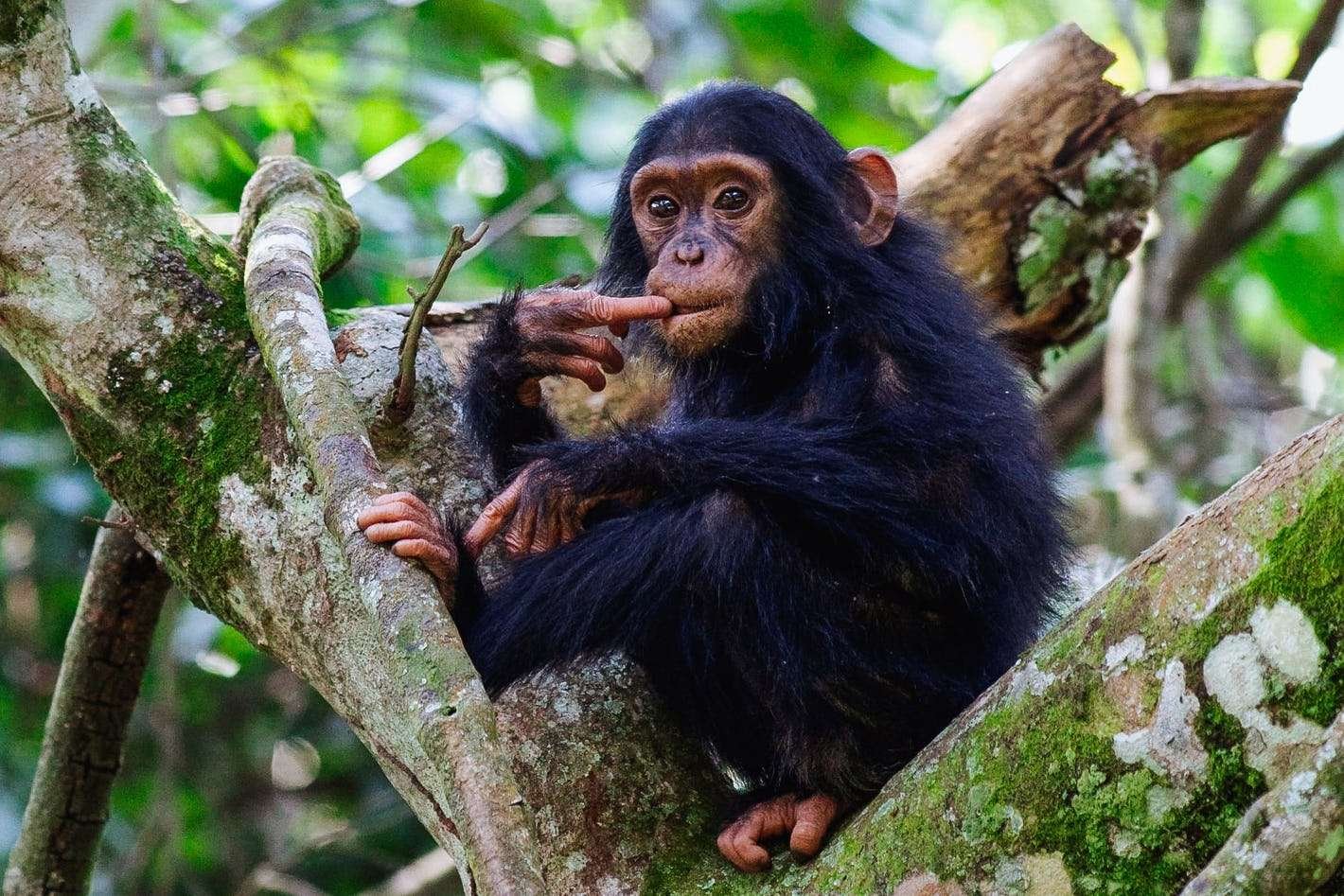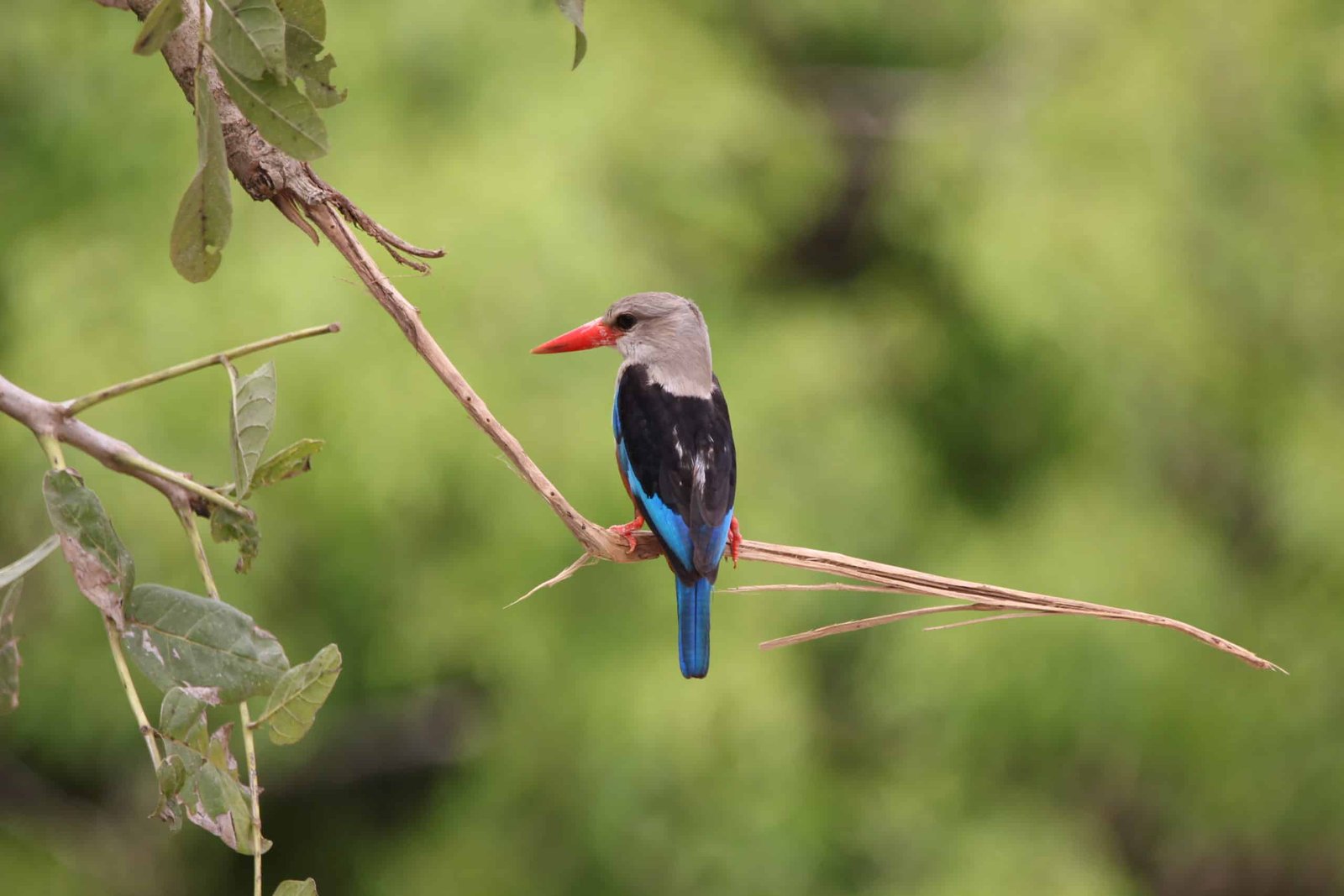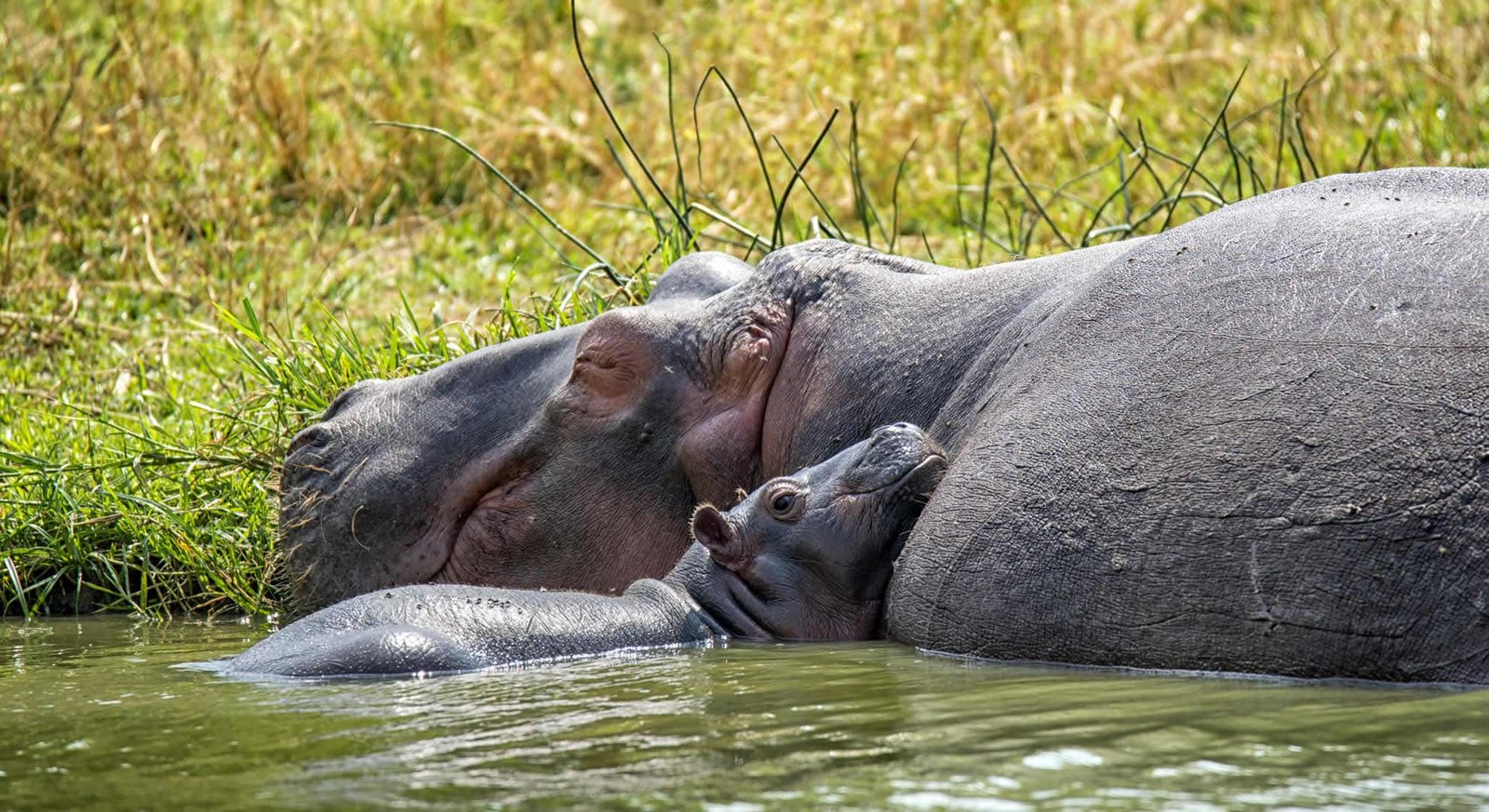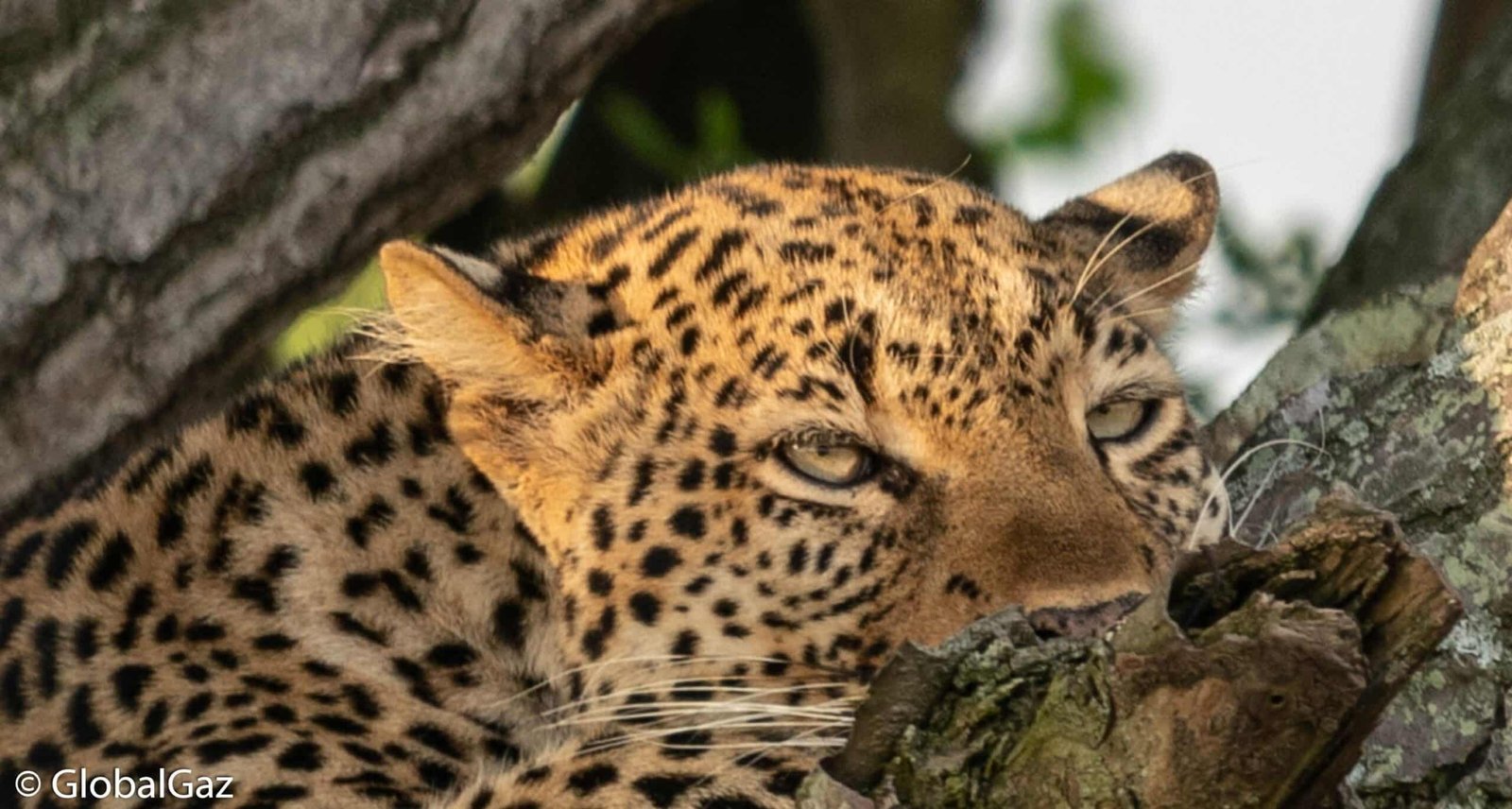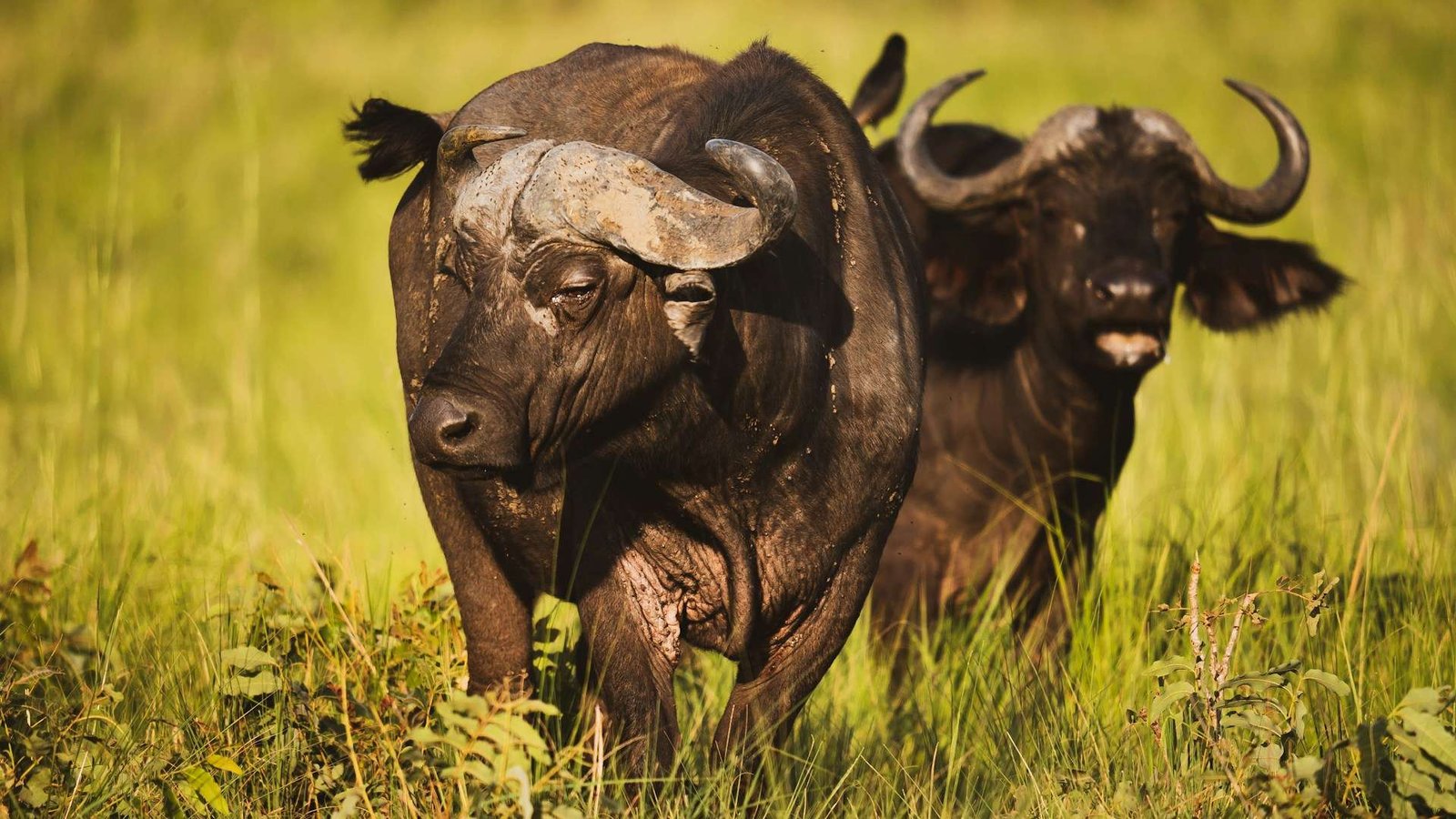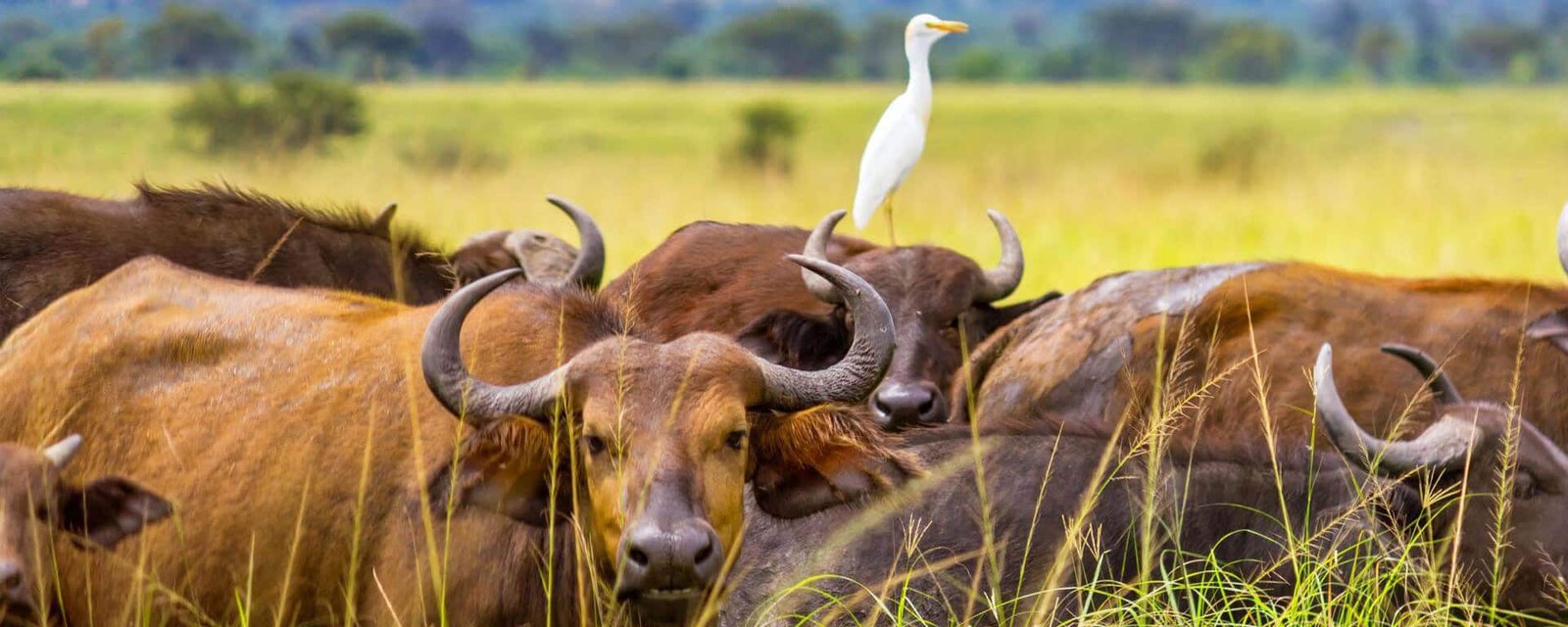Queen Elizabeth National Park, located in southwestern Uganda, is a stunning wildlife reserve. It covers approximately 1,978 square kilometers and features a mix of savannah grasslands, tropical forests, and sparkling lakes. This diversity creates a vibrant tapestry of ecosystems that support a wide range of wildlife.
Wildlife and Biodiversity
The park is home to over 95 mammal species. Visitors can spot African elephants, majestic lions, elusive leopards, formidable buffaloes, and playful hippos. The Kazinga Channel, connecting Lake Edward and Lake George, is a hotspot for wildlife. Hippos and crocodiles are often seen here. Birdwatchers will delight in the park’s rich avian diversity, with over 600 bird species, including the African fish eagle and the vibrant shoebill stork.
Activities and Attractions
Game Drives: Experience thrilling game drives through the park’s varied landscapes. These drives offer a chance to see wildlife in their natural habitats.
Boat Safaris: Explore the Kazinga Channel on a boat safari. This provides a unique perspective on aquatic animals and birdlife.
Guided Nature Walks: Enjoy guided walks through the park. These walks offer an up-close view of the park’s flora and fauna.
Cultural Significance
The park is also culturally rich. Local communities, such as the Bakonzo and Basongora, have lived around the park for generations. Visitors can engage with these communities to learn about their traditional practices and their relationship with the park’s wildlife.
Conclusion
Queen Elizabeth National Park is a gem of Uganda’s natural heritage. Its rich biodiversity, breathtaking landscapes, and immersive wildlife experiences make it a must-visit destination. Whether you’re a seasoned safari-goer or a first-time visitor, the park offers a memorable adventure and a deep connection to the wild heart of Africa.









